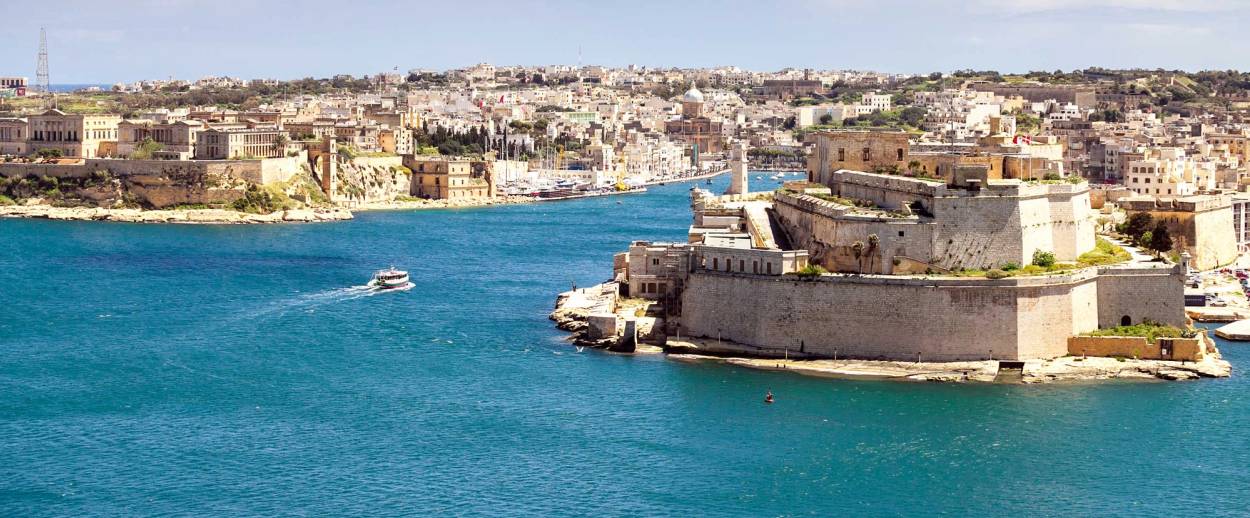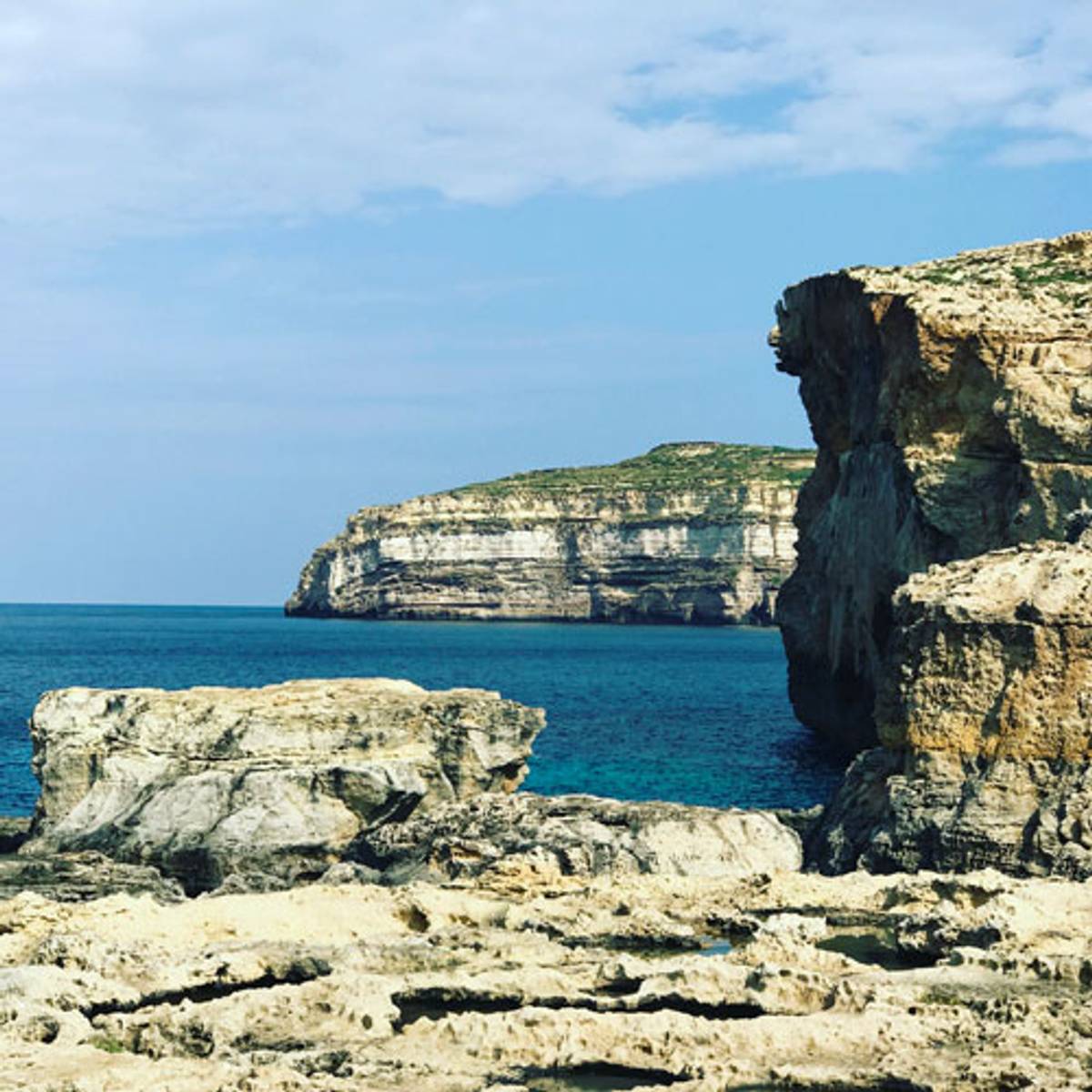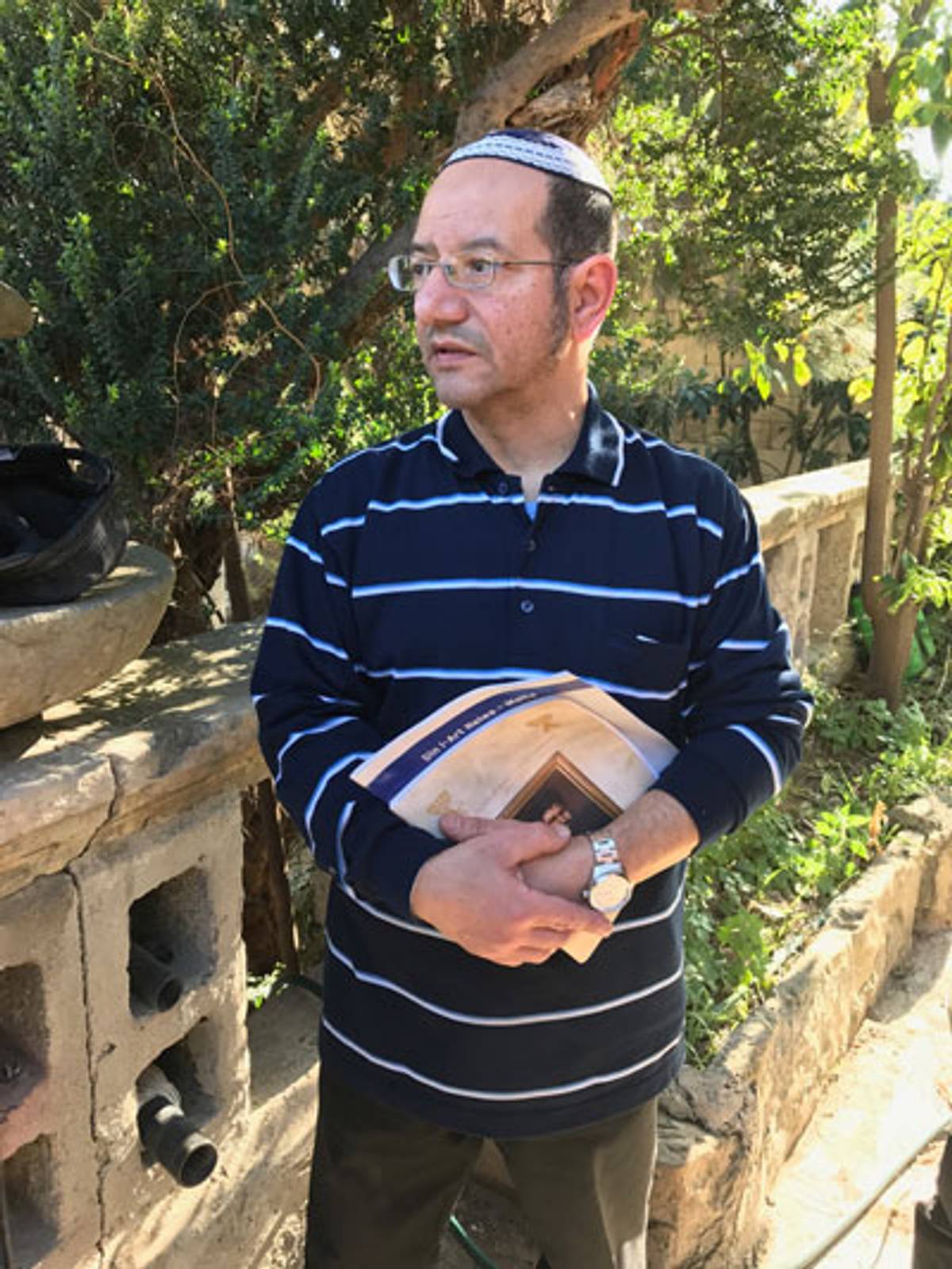The Jews in the Middle of the Sea
A tour through Malta’s Jewish history




It was the first organized tour focusing on Malta’s Jewish heritage, and there were six of us: five American Jewish journalists, and one Muslim Turkish-American representative of Turkish Airlines. We were strolling on a spring day through the sunny streets and limestone buildings of the residential neighborhood of Kappara, San Gwann, and we came to a door adorned with a mezuzah and a placard with the house name “Tayara.” We knocked, and the caretaker let us in to meet Shelley Tayar, 86, matriarch of the Maltese Jewish community.
Tayar is known for her wit and brassy humor. “Are you converted, yet?” she teased our non-Jewish tour organizer, then admonished him for not confirming about attending her Passover Seder the following week. “I grew up with all religions and all faiths,” she told the group, discussing the interfaith harmony on the island. She then went on to tell the story of life with her second husband, George Tayar, a direct descendant of the first rabbi of Malta, Josef Tajar, who immigrated from Tripoli in 1846. She married George, she told us, after his first wife, her sister, died of cancer.

Malta is an EU country, peaceful and easy to reach, and recently there has been a surge in interest about Malta from North Americans—and even Maltese—discovering their Jewish identities. Jewish surnames were always rumored to exist on the islands. Even an organizer from the Maltese tourism bureau, Michelle Buttigieg, of Gozo Island, shares the same last name as one of the last of three residents of Comino Island, the home of perhaps the most famous Jewish mystic of Malta. “From recent DNA findings, my heritage has significant traces from Israeli and European Jews,” Buttigieg said. “This intrigued me to get more involved in this project and learn about my heritage.”
Thirty-thousand Israelis visit Malta each year, and this summer Air Malta began flying direct from Tel Aviv—a two-hour flight. Due to its location in the middle of the Mediterranean, Malta has always been a tourist hotspot: Queen Elizabeth II and Prince Philip spent their 60th anniversary in Malta in 2011; they lived here in 1949 and have vacationed here off and on since. Yet, until now, there has never been a tourism program that addressed Malta’s Jewish heritage. To fill that void, the Canadian-Maltese tour agency Exclusively Malta, working with the government-run Malta Tourism Authority, created a Jewish-highlights tour in late March 2017.
***
We began the tour on the smaller, less populated, more bucolic island of Gozo, the second main island of Malta. Gozo also has a plethora of old Jewish-named sites, like Wied Sansun (which in Maltese means Samson’s Valley), Ghar Lhudin (Jewish Fountain), and Misrah Lhudi (Jew’s Square). Robert, our local guide, proudly pointed to the 13th-century prison home of Abraham Abulafia, the kabbalist from Zaragoza, Spain, who composed his best works while in exile in Comino. He composed his book Sefer ha-Ot, or Book of the Sign, in 1288, and his handbook Imre Shefer around 1291. It is rumored that he died here, although there is no specific evidence to support that.
We learned the history of Jewish Malta along the way, in the streets and in the restaurants of Gozo and Malta. Jews have been in Malta from the time of the seafarer tribes. The first Jew in Malta was Saul, later known as Paul, in 62 CE, who introduced Christianity. The catacombs show that Jews lived on Malta during the fourth and fifth centuries. During the Middle Ages under Norman rule in 1091, 500 Jews lived on the main island of Malta and 350 on Gozo. Jews prospered here and were not required to live in ghettos, but in 1492 the Spanish Edict of Expulsion forced all Jews to leave the country and pay for the losses caused by their expulsion. Several dozen Maltese Jews then converted to Christianity, hence the current Christian Maltese Jewish surnames. Others joined the Levant community in Sicily.
In 1530, Charles V of Spain gave Malta to the Catholic order known as the Knights of St. John. Some conversos moved back, practicing their religion in secret, but Jews were not safe, as the Christian Knights of St. John would take Jews hostage for ransom. Under their rule, there were many Jewish slaves, and any free Jews who wished to visit the country were forced to enter the remaining Jews’ sally port and stay overnight in prisons during their stay. The Jews’ sally port still stands in the capital city of Valletta; a bar nearby is called Jews Sally Port, and its logo is an Orthodox-looking man.
What ultimately freed all Jews was the arrival of Napoleon in 1798. During the two-year French rule from 1798 to 1800 and subsequent British rule until 1964, when Malta became independent, Jews came from Gibraltar, England, North Africa, Portugal, and Turkey. In the 20th century, many Jews fleeing Nazism came to Malta, as it was the only European country that didn’t require visas for Jews to enter. Today there are about 100 Jews living in Malta.

After Gozo, we met Malta’s unofficial chief rabbi, Reuben Ohayon, at the Marsa Cemetery, in Ħamrun; it is one of three Jewish cemeteries and is pristinely maintained, due in large part to the rabbi’s efforts. Ohayon’s family is from Morocco, and he is the officiator of the cemetery as well as the former shochet, or kosher butcher. He also runs a small luggage factory. Ohayon is soft-spoken and calm and stands about five feet tall. “We live in peace and harmony with the Maltese and other minority communities,” he proudly told us while showing us the cemetery. “Yom Hashoah is commemorated in the parliament, and some schools commemorate as well; even on Gozo a minute of silence is observed.”
Ohayon showed us to the entrance of the cemetery, where there is a tahara, or building for cleansing the dead; on it was a donation plaque with the name “Admor of Malta.” The self-proclaimed Admor, whose real name is Dov Ber Hakohein, is a controversial Israeli rabbi who moved to Malta in 2010 and works as a spiritual healer, also hosting occasional Shabbat meals for tourists. He is the founder and grandmaster of the United Order of Light, which he says is a nondenominational universal spiritual organization; he also claims to provide blessings to heal emotional, physical, and psychological illnesses, including incurable cases.
Though Admor calls himself the chief rabbi of Malta, he wasn’t elected or appointed as such by the community, and Ohayon fulfills most of those duties.
On Saturday morning, we attended shul in a residential neighborhood three miles outside Valletta in a house unmarked except for a mezuzah, in the apartment complex of Florida mansions. The Jewish Foundation of Malta now manages the “new” synagogue along with a Jewish Center built in 2000, which is sustained by donations from the American and British Jewish community.
The men’s chairs faced the center with a women’s section in the back, separated by a curtain. Rabbi Chaim Shalom, a Lubavitcher emissary who moved here in 2014 with his family, opened services with a discussion. Then Ohayon led the Ashkenazi services in Hebrew with some Sephardic melodies. Ohayon’s elderly father, Abraham, the president of the Jewish community, led Kiddush and shared some memories about WWII.
After my trip, on July 4, I heard that Abraham Ohayon had died, at the age of 88. Reuben prepared his father’s body for burial. At the funeral, almost 80 people clustered around the gravesite, while others lined the small path that leads from the entrance to the back of the cemetery. Eight family members carried the body to the grave. In attendance was Rabbi Shalom of the local Chabad, as well as Christian and Muslim locals. Some people brought flowers; there was a bouquet from the Italian ambassador and his wife, Israeli opera singer Hadar Helevy. The last ritual was the tearing of the shirt.
***
Like this article? Sign up for our Daily Digest to get Tablet Magazine’s new content in your inbox each morning.
Alyssa Pinsker is a writer based globally. Follow her on Twitter @girl_goneglobal.